(Photograph by Natasha Caruana)
Last night I was delighted to be invited to the ICA for an emphatic catwalk show with a difference. The event was organised by former designer Elaine Foster-Gandey; director of Designer Sales UK.
Elaine developed Real People do the Catwalk after hosting a fashion show which included both dancers and models on stage. “I asked my customers about it and they said they related to the dancers and not the models”.
Spurred by this Elaine set about putting together a pioneering show to further the arguement that replacing super-thin models with people who reflect society could lead to increased sales for the fashion industry.
The show opened in silence with the models resembling extras from Scream in their attire of long black robes and white masks. Each model first vocalised how they felt the fashion industry related to them, stomach cheap followed by revealing their beautifully styled outfits and their real identities.
(Photograph by Natasha Caruana)
The driving force behind the model casting to show the fashion industry that different body shapes can be celebrated in fashion shows and advertising campaigns.
“It is about not creating an elite world where no one else can join in,” Explained Elaine. “So many people want a chance, but know that because they are five foot tall, or a size 14-16, they never will have.” The models featured within the show ranged from a 6’1” Drag Artiste to a 5’4” male; dress sizes 8 to 20 and ages between 25 to 60+.
What I enjoyed most about the show was the diversity and celebration of the models differences. It was fresh and modern with all the models having poise, confidence and importantly a great sense of humour. Their
good spirits and sense of fun gave the show an electric atmosphere.
The models’ charismatic personalities brought out something unique in the clothes that might not have been projected if worn by a ‘normal’ model. Whether this is because they were real people displaying how the clothes would fit on our own bodies or down to their insurmountable energy and passion for highlighting an issue intricately linked to the size zero debate.
Afterwards there was a riveting post-show debate featuring: Elaine Foster-Gandey; Real People do the Catwalk organiser, writer Dariush Alavi; Eleni Renton, founder of Leni’s Model Management; Hilary Alexander, esteemed fashion director at The Daily Telegraph and was chaired by writer and broadcaster Bidisha.
The debate began by Dariush Alavi somewhat controversially enquiring as to why Real People do the Catwalk
was produced to “enact a traditional fashion show.” Suggesting that by keeping the traditional format, could anything change by replacing the models with real people as it is not the models who are at fault but the stage on which they stand. Alavi suggested doing away with the catwalk altogether.
This prompted both Hilary Alexander and a member of the audience to defend the catwalk as “fashion’s world stage” and looked back to a John Galliano show where the entire collection was presented on an overhead track of basic clothes hangers. Dariush’s response suggested making models obsolete and displaying clothes on a fashion conveyer belt went down like a lead balloon. The audience and the rest of the panel remained sceptical of high fashion designers considering a presentation that in a format is more commonly associated with The Generation Game.
(Photograph by Natasha Caruana)
Questions were raised about the morality of the fashion industry and the spotlight on the size zero debate intensified. Hilary spoke about the Telegraph not facing the same constraints from advertisers as glossy fashion titles and said that the newspaper’s “aim to strike a balance between real people and models and actively try to include both types of woman in spreads… the oldest woman we’ve ever featured was 94.”
Panellist Eleni Renton mentioned that the Editor of UK Vogue Alexandra Shulman spoke out against size zero in June accusing designers of making magazines hire models with “jutting bones and no breasts or hips” by supplying them with “minuscule” garments for their photo shoots. She claimed that Vogue frequently “retouched” photographs to make models look larger. In response Hilary questioned whether things had begun to change at UK Vogue as they still fail to represent body diversity within their pages, suggesting it would become apparent what their real stance on size zero is over the coming months.
(photograph by Natasha Caruana)
Elaine added that whilst magazine images are not healthy for women, they have a considerable impact on impressionable teenagers who start to believe they need to emulate perfect bodies in order to be considered beautiful and successful.
“Look around, everything we see is airbrushed… these aren’t real images.”
To emphasise her point Elaine spoke of teenagers being more body conscious than any generation before citing her own children as an example: “I have a six-year-old daughter and 11 and 15-year-old stepdaughters who are constantly looking in the mirror. My stepdaughters are so skinny and so conscious about what they eat and what they see in the media. They are constantly aware of body image issues. It is a big issue for adolescent girls and boys.”
The panel and audience agreed that the media are responsible for putting different demographics into the mainstream and popularising diversity, and that they have a moral responsibility to society to not glamorise super skinny body shapes. Elaine believes that there has “been a spike in our body consciousness” in recent years and we have turned into a society “afraid of flesh, hair and wrinkles”.
Eleni, director of Leni’s Model Management only works with girls “who are sizes 8 to 12… They are the type of girls you see in the street and think, ‘I would like a body like hers.”
As the debate drew to a close the supermodel era was discussed, with Hilary citing that the greats in the industry: Linda, Kate and Naomi all had personality, and that was what made them famous, rather than their figures. On the flip side other great supermodels such as Cindy Crawford, Christy Turlington and Sophie Dahl were celebrated for having curves.
Through the conversations it became apparent that the only modern day equivalent of a curvaceous celebrity pushing the boundaries of what is acceptable in mainstream is Beth Ditto, who won LOVE magazine a prestigious industry award for her iconic nude cover
The overall outcome was for women to take responsibility for themselves and their bodies and actively promote positive body attitudes to their daughters, friends and grandchildren. Everyone agreed that while it is easy to blame the media for the size zero trend, consumers need to use our buying power to actively challenge the fashion industry into reconsidering their design practices and elitism.
I left the ICA feeling very empowered, wanting to help revolutionise the fashion industry from the outside in.
Categories ,Bidisha, ,Dariush Alavi, ,Designer Sales UK, ,Dove Real Beauty Campaign, ,Elaine Foster-Gandey, ,Eleni Renton, ,Hilary Alexander, ,ica, ,Kate Moss, ,Leni’s Model Management, ,London Fashion Week, ,Mark Fast, ,Naomi Cambell, ,Real People do the Catwalk ICA, ,Size Zero Debate, ,The Daily Telegraph, ,The Guardian
Similar Posts:
- LFW 09 – Ziad Ghanem – catwalk counterculture
- London Fashion Week A/W 2011 Catwalk Review: John Rocha
- Chantal Joffe exhibition
- Alternative Fashion Week 2010 at Spitalfields Market: An Introduction.
- London Fashion Week S/S 2011 Catwalk Review: Louise Amstrup

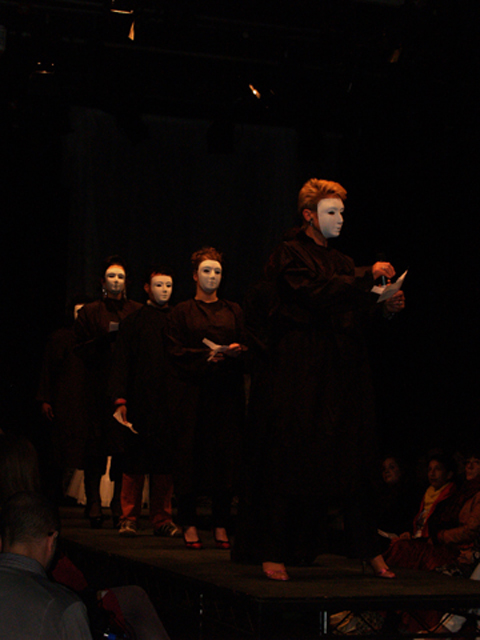



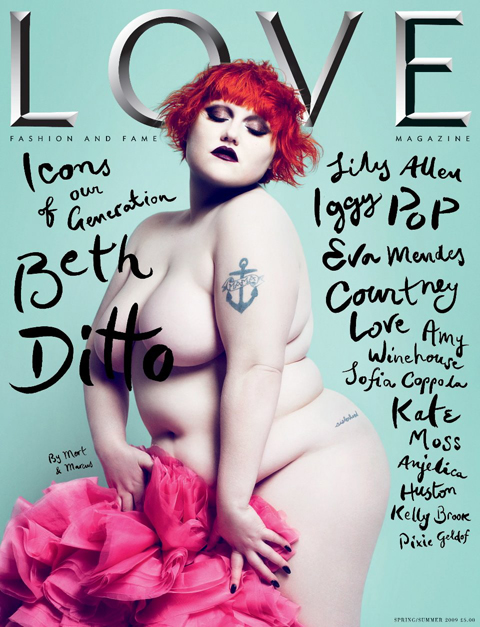
 What will be the habits of the new counterculture? / In the new counter-culture what will the fashions be like / What will be the stimulants of the new counterculture?
What will be the habits of the new counterculture? / In the new counter-culture what will the fashions be like / What will be the stimulants of the new counterculture? Work Gallery mural
Work Gallery mural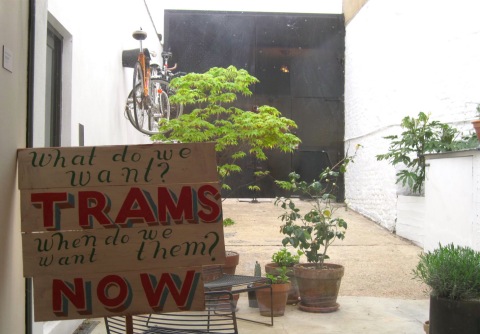 What do we want? TRAMS. When do we want them? NOW.
What do we want? TRAMS. When do we want them? NOW.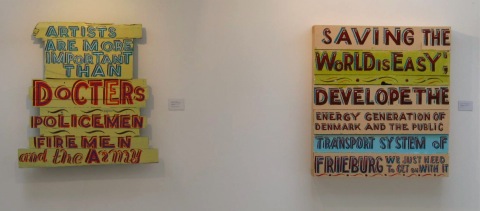 Artists are more important than docters policemen firemen and the army / Saving the world is easy; develop the energy generation of Denmark and the public transport system of Frieburg. We just need to get on with it.
Artists are more important than docters policemen firemen and the army / Saving the world is easy; develop the energy generation of Denmark and the public transport system of Frieburg. We just need to get on with it.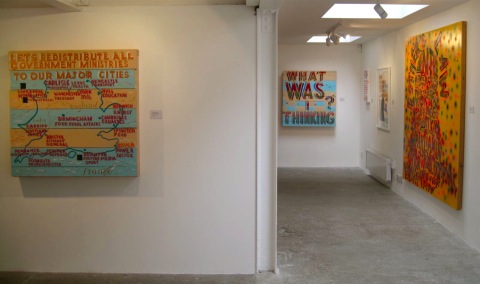 Work Gallery
Work Gallery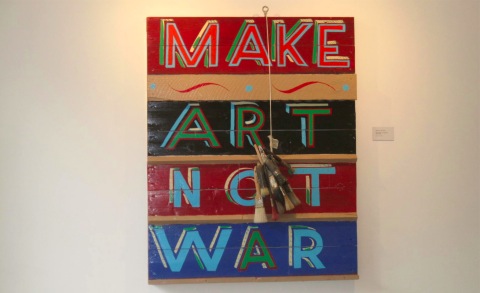 Make art not war
Make art not war